| Click On Image For Full Size | Size | Image Description | Source By |
|
|---|---|---|---|---|
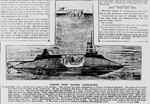 |
516k | ESCAPE FROM SUNKEN SUBMARINES. A detachable boat, manned and raised to the surface. This device has been patented by J. Fripp of Catford, England. The deck of the boat lies flush with the back of the submarine. Its lid is bolted to the body of the submarine by four bars, which can be released by a single turn of a screw. Between the boat and its containing chamber is a space of three inches, which can be filled with water from sea cocks after the crew has taken refuge. Thus, when the bolts are shot, the inrush of the water will cause the boat to swing outward, right itself and ascend. In the chamber wall is the hatch, or port of entrance, and opposite that, in the side of the boat is a similar port. Both these have strongly clamped hinged doors. When the boat reaches the surface another hatch can be opened on the deck, and thus the men may escape or obtain air until they are picked up. From the containing chamber rises at the same time a flat buoy fastened to the submarine by a fine line. This is left floating to mark the position of the wreck. The white dotted lines in the large picture show the track of the boat's ascent to the surface. In the lower position it is being manned by the escaping crew. |
Image from the Illustrated London News. Image and text provided by Library of Congress, Washington, DC. Photo & text by New-York Tribune.(New York [N.Y.]) 1866-1924, 09 December 1906, Image 24, courtesy of chroniclingamerica.loc.gov. | |
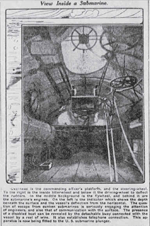 |
641k | View Inside a Submarine Overhead is the commanding officers platform and the steering wheel. To the right is the inside tiller-wheel and below it the driving wheel to deflect the rudders. In the middle background is the flywheel and behind it are the submarine's engines. On the left is the indicator which shows the depth beneath the surface and the vessel's deflection from the horizontal. The question of escape from sunken submarines is seriously engaging the attention of engineers and also that of communication with the surface. The presence of a disabled boat can be revealed by the detachable buoy connected with the vessel by a reel of wire. It also establishes telephone connection. This apparatus is now being fitted to the U. S. submarine Plunger (SS-02). | Image and text provided by University of Utah, Marriott Library. Photo & text by The Spanish Fork Press. (Spanish Fork, Utah) 1902-current, 10 January 1907, Image 6, courtesy of chroniclingamerica.loc.gov. |
|
 |
449k | AN INVERTED FLOATING DOCK AT KIEL This vessel, which is a sort of floating bridge or inverted floating dock, is intended to raise a sunken submarine with the least possible delay. It carries cranes constructed to lift 500 tons. When the submarine has been made fast to the dock the sunken vessel will be hauled to the surface. |
Image from the Illustrated London News. Image and text provided by Library of Congress, Washington, DC. Photo & text by New-York Tribune.(New York [N.Y.]) 1866-1924, 08 December 1907, Image 22, courtesy of chroniclingamerica.loc.gov. | |
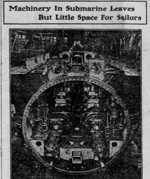 |
546k | Machinery In Submarine Leaves But Little Space For Sailors NAVAL men are just now paying a great deal of attention to the development of submarines, some making the prediction that this type of vessel is destined to make the costly Dreadnoughts obsolete. The recent sinking of a German submarine with its crew, all, but three of whom were rescued after remaining under water several hours, has directed attention to safety measures. One suggestion is that submarines be built with removable keels, so that in case of an accident the keel can be dropped so that the body of the vessel will rise. The English admiralty has adopted a safety helmet with which all submarines will be equipped. The helmet fits the shoulders and is attached to a short waterproof jacket. Inside the helmet is a combined purifier and oxygen generator that will permit the wearer to breathe the same air repeatedly while quitting a disabled craft and rising to the surface. It is said that the apparatus can be put on in thirty seconds without assistance. The cut printed above shows an unusual view of a submarine. It is a section of the Norwegian Kobben. and the gasoline engines and shafting for the twin screws are plainly shown. It will be noticed that little space is left in this end of the boat for the crew. The new German submarines will be constructed on this model. |
Image and text provided by Ohio Historical Society, Columbus, OH. Photo & text by The Democratic Banner. (Mt. Vernon, Ohio) 1898-192?, 17 March 1911, Image 1, courtesy of chroniclingamerica.loc.gov. | |
 |
1.90k | Government to Build Dock Which Will Prevent Accidents in Testing Submarines | Image and text provided by The New York Public Library, Astor, Lenox and Tilden Foundation. Photo & text by The Sun. (New York [N.Y.]) 1833-1916, 03 August 1913, FOURTH SECTION PICTORIAL MAGAZINE, Image 34, courtesy of chroniclingamerica.loc.gov. | |
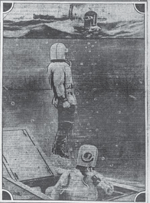 |
602k | A NEWLY INVENTED DEVICE FOR SAVING IMPRISONED SUBMARINE MEN This apparatus invented by Captain Hull and Surgeon Rees of the British Navy, is designed to save submarine sailors who are now hopelessly trapped and condemned to a horrible death in case the submarine is held under water, apparatus consists of a thin copper helmet and a water-proof jacket, the latter containing a pocket which is ingeniously fitted with a chemical device for purifying tha man's breath, so that he can live and breathe freely for a considerable time under water. So successful have been the experiments that these life-saving suits are now fitted to all British boats. Each submarine is fitted with air locks when a certain quantity of air is imprisoned. When the boat is trapped or wrecked the men can breathe for a period long enough to allow them to put on the suit then they can lift the hatch, pop out into the water and rise to the surface where they can float until rescued. |
Image and text provided by University of Nebraska-Lincoln Libraries, Lincoln, NE. Photo & text from the Omaha Daily Bee. 187?-1922, 18 April 1915, EDITORIAL SOCIETY, Image 25, courtesy of chroniclingamerica.loc.gov. |
|
 |
705k | Lieutenant Charles B. Momsen, USN, using a battery less underwater telephone in a test of the flooded escape chamber he had built on the deck of the S-4 (SS-109).... | USN photo courtesy of Scott Koen & ussnewyork.com. | |
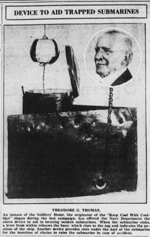 0810833 |
NR | Device To Aid Trapped Submarines
THEODORE G. THOMAS An inmate of the Soldiers’ Home, the originator of the "Keep Cool With Coolidge" slogan during the last campaign, has offered the Navy Department the above device to aid in locating sunken submarines. When the submarine sinks, a lever from within releases the buoy, which rises to the top and indicates the position of the ship. Another device provides slots under the keel of the submarine for the insertion of chains to raise the submarine in case of an accident. | Image and text provided by Library of Congress, Washington, DC. Photo & text by Evening Star. [volume] [volume] (Washington, D.C.) 1854-1972, 16 April 1928, Image 23, courtesy of chroniclingamerica.loc.gov. | |
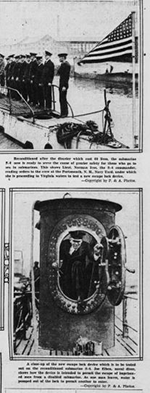 | NR | Reconditioned after the disaster which cost 40 lives, the submarine S-4 (SS-109) now is ready to serve the cause of greater safety for those who go to sea in submarines. This shows Lieut. Norman Ives, the S-4 commander, reading orders to the crew at the Portsmouth, N. H.. Navy Yard, under which she is proceeding to Virginia waters to test a new escape lock device. A close-up of the new escape lock device which is to be tested out on the reconditioned submarine S-4. Joe Eiben, naval diver, shows how the device is intended to permit the escape of imprisoned men from a disabled submarine. As one man leaves, water is pumped out of the lock to permit another to enter. | Image and text provided by Library of Congress, Washington, DC. Photo & text by Evening Star.[volume] (Washington, D.C.) 1854-1972, 18 October 1928, Image 17, courtesy of chroniclingamerica.loc.gov. |
|
 | 59k | Lieutenant Carlton Shugg, USN(CC),co-designer of submarine rescue chamber and designer of the New London submarine escape training tower; Lieutenant Norman S. Ives, USN,
Commanding Officer of S-4 (SS-109);
Lieutenant Charles B. Momsen, USN,
developer of the submarine escape "lung"; and
Chief Gunner Clarence Tibbals, USN,
co-developer of the submarine escape "lung" and of the submarine rescue chamber. Photographed at New London, Connecticut, circa the Winter of 1928-29. The four men are listed from left to right in this view. | Official USN photo # NH 100126, from the collections of the Naval Historical Center. Courtesy of Mr. Wallace Shugg, 1984. | |
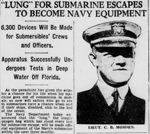 0810832 |
NR | "LUNG" FOR SUBMARINE ESCAPES TO BECOME NAVY EQUIPMENT 6,300 Devices Will Be Made for Submersibles’ Crews and Officers. Apparatus Successfully Undergoes Tests in Deep Water Off Florida. | Image and text provided by Library of Congress, Washington, DC. Photo & text by Evening Star. [volume] [volume] (Washington, D.C.) 1854-1972, 19 March 1929, Image 2, courtesy of chroniclingamerica.loc.gov. | |
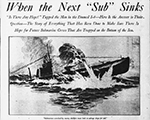 |
NR | When the Next "Sub" Sinks Is There Any Hope?" Tapped the Men in the Doomed S-4 (SS-109) — Here Is the Answer to Their Question — The Story of Everything That Has Been Done to Make Sure There Is Hope for Future Submarine Crews That Are Trapped on the Bottom of the Sea by Commander Edward Ellsberg |
Image and text provided by Library of Congress, Washington, DC. Photo & text by Evening Star.[volume] (Washington, D.C.) 1854-1972, 07 July 1929, Image 75, courtesy of chroniclingamerica.loc.gov. |
|
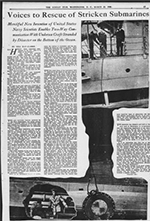 |
555k | Voices to Rescue of Stricken Submarines Merciful New Invention of United States Navy. Scientists Enables Two-Way Communication With Undersea Craft Stranded by Disaster on the Bottom of the Ocean. |
Image and text provided by Library of Congress, Washington, DC. Photo & text by Evening Star.[volume] (Washington, D.C.) 1854-1972, 23 March 1930, Image 99, courtesy of chroniclingamerica.loc.gov. |
|
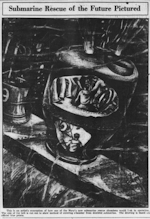 | NR | Submarine Rescue of the Future Pictured This is an artist's conception of how one of the Navy’s new submarine rescue chambers would look in operation. The side of the bell is cut out to show method of entering chamber from disabled submarine. The drawing is based on official blue prints. | Image and text provided by Library of Congress, Washington, DC. Photo & text by Evening Star.[volume] (Washington, D.C.) 1854-1972, 14 June 1931, Image 3, courtesy of chroniclingamerica.loc.gov. | |
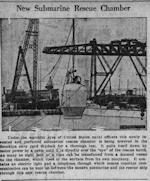 | NR | New Submarine Rescue Chamber Under the watchful eyes of United States naval officers this newly invented and perfected submarine rescue chamber is being lowered in the Brooklyn navy yard drydock for a thorough test. It pulls itself down by motor power by a cable until it is directly over the "eye" of the rescue hatch. As many as eight men at a time can be transferred from a doomed vessel to the chamber, which rises to the surface from its own buoyancy. It contains an electric light and a telephone through which means constant communication can be kept up between the sunken submarine and the rescue ship through this new rescue chamber. | Image and text provided by University of Maryland, College Park, MD. Photo & text by The Midland Journal. (Rising Sun, Md.) 1885-1947, 31 July 1931, Image 6, courtesy of chroniclingamerica.loc.gov. | |
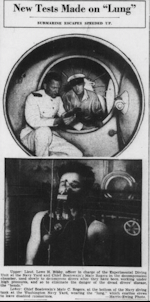 | NR | New Tests Made on "Lung" SUBMARINE ESCAPES SPEEDED UP. Upper: Lieut. Lowe H. Bibby, officer in charge of the Experimental Diving Unit at the Navy Yard and Chief Boatswain's Mate Rogers in the decompression chamber, used slowly to decompress divers after they have been working under high pressures, and so to eliminate the danger of the dread divers' disease, the "bends." Lower: Chief Boatswains Mate C. Rogers, at the bottom of the Navy diving tank at the Washington Navy Yard, wearing the "lung," which enables crews to leave disabled submarine. | Image and text provided by Library of Congress, Washington, DC. Photo & text by Evening Star.[volume] (Washington, D.C.) 1854-1972, 19 August 1931, Image 1, courtesy of chroniclingamerica.loc.gov. | |
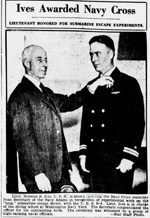 0810831 |
NR | Ives Awarded Navy Cross LIEUTENANT HONORED FOR SUBMARINE ESCAPE EXPERIMENT Lieut. Norman S. Ives, U. S. N. is shown receiving the Navy Cross yesterday from Secretary of the Navy Adams in recognition of experimental work on the "lung," submarine escape device, with the S-4 (SS-109). Lieut. Ives is in charge of the diving school at Washington Navy Yard. The Secretary congratulated the officer for his outstanding work. The ceremony was witnessed by a group of high-ranking naval officials. | Image and text provided by Library of Congress, Washington, DC. Photo & text by Evening Star. [volume] [volume] (Washington, D.C.) 1854-1972, 17 December 1931, Image 28, courtesy of chroniclingamerica.loc.gov. | |
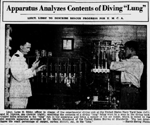 0810830 |
NR | Apparatus Analyzes Contents of Diving "Lung" LIEUT. LIBBY TO DESCRIBE RESCUE PROGRESS FOR Y. M. C. A. Lieut. Lowe H. Blbby, officer in charge of the experimental diving unit at the United States Navy Yard here (left), and M. Lipnick, gas chemist (right), analyzing the contents of a diving "lung" being worn by a man in the diving tank. Copper tubes attached to the "lung" run to the apparatus and bring a sample of the air inside, which is tested by the gas analysis apparatus developed by Dr. Martin Shepherd of the United States Bureau of Standards. The test determines the exact percentage of oxygen, carbon dioxide, etc. | Image and text provided by Library of Congress, Washington, DC. Photo & text by Evening Star. [volume] [volume] (Washington, D.C.) 1854-1972, 14 March 1932, Image 4, courtesy of chroniclingamerica.loc.gov. | |
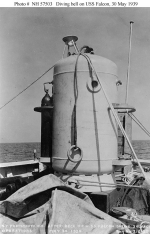 | 72k | A diving bell on the after deck of Falcon (ASR-2) during the early stages of the Squalus (SS-192) salvage operations, 1939, 30 May 1939. This is not a McCann Rescue Chamber, but the Momsen-McCann diving bell. This was originally the Seaplane hangar on submarine S-1 (SS-105). When the S-1 program was cancelled the Seaplane hangar was salvaged by Charles Momsen, the submarine Commander, for conversion to a rescue Bell. | Photographed by the Portsmouth Navy Yard, Kittery, Maine. Officia lUSN photo USNHC # NH 57503, from the collections of the Naval Historical Center. Partial text and photo i.d. courtesy of Jeffery G. Scism. | |
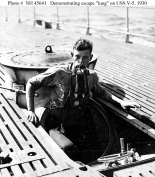 |
104k | Crewman A.L. Rosenkotter of V-5 (SC-1) demonstrates the use of the submarine's after escape hatch and the emergency escape Momsen Lung, during V-5 trials, July 1930. In 1931, V-5 was renamed and redesignated, becoming Narwhal (SS-167). | USNHC photograph # NH 45641. | |
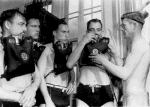 | 39k | The Momsen Lung in use by recruits at the Navy's submarine school. | USN photo courtesy of chinfo.navy.mil. | |
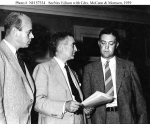 | 123k | Acting Secretary of the Navy Charles Edison (center) reads a Letter of Commendation from President Franklin D. Roosevelt to members of the Squalus (SS-192) salvage unit, in his Navy Department offices, 16 September 1939. Looking on are Commander Allan R. McCann, USN, (left) and Commander Charles B. Momsen, USN, (right). | Officia lUSN photo USNHC # NH 57334, from the collections of the Naval Historical Center. | |
 | 267k | Allan R. McCann stands next to the rail (third from left) as Falcon (ASR-2) crewmen suit-up two Deep Sea Divers during the rescue/salvage operation following the sinking of the U.S. Navy submarine Squalus (SS-192). Momsen led the successful effort, which resulted in the rescue of 33 submariners trapped aboard Squalus and remains to this day the greatest undersea rescue in history. | USN photo # N-0000X-002, courtesy of chinfo.navy.mil. | |
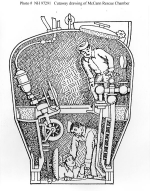 | 159k | Swede Momsen, traumatized by the sinking of the S-51 (SS-162) and learning that the men had survived the wreck only to be trapped inside the submarine at the ocean's bottom, thought of a way to rescue trapped Submariners. He would build a large steel bell-shaped chamber, which could be lowered with cables down to the escape hatch on a sunken submarine. A watertight seal to the submarine could be achieved by placing a rubber gasket around the diving bell's bottom and reducing the air pressure once the bell was over the escape hatch. Then, the hatch could be opened, and the trapped Submariners could climb aboard. A hatch on the top of the bell would allow the rescued Submariners and diving bell operators an easy way out of the bell. The diving bell went through a series of tests off the shores of Key West, Florida. Based on these tests, Momsen had several changes in mind for the bell, but was sent to the Bureau of Construction and Repair to teach Submariners how to use the Momsen Lung before he could make the changes. Lieutenant Commander Allan McCann was put in charge of the revisions on the diving bell. When the bell was completed in late 1930, it was introduced as the McCann Rescue Chamber. Cutaway drawing of the device used to rescue 33 crewmen from the sunken submarine Squalus in May 1939. | Text courtesy of onr.navy.mil. Officia lUSN photo USNHC # NH 97291, from the collections of the Naval Historical Center. | |
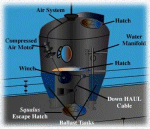 | 29k | Diagram of the McCann Rescue Chamber. | Courtesy of e-nekton.com. | |
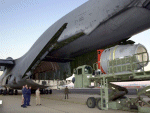 | 56k | The Submarine Rescue Chamber (SRC) is loaded aboard an Air Force Reserve C-5A Galaxy at Naval Air Station North Island in San Diego by members of the Navy's Deep Submergence Rescue Unit, Diving Systems Detachment. The SRC will be transported to Singapore for Exercise Pacific Reach 2000, a Submarine Rescue Exercise that will involve naval units from the United States, Japan, Singapore, Korea and Australia. 24 September 2000. | USN photo # N-1523C-047 by Senior Chief Photographer's Mate Terry Cosgrove, courtesy of chinfo.navy.mil. | |
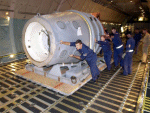 | 83k | Members of the Navy's Deep Submergence Unit, Diving Systems Detachment, slide the Submarine Rescue Chamber (SRC) from an Air Force Reserve C-5A Galaxy for transportation to Exercise Pacific Reach 2000. | USN photo # N-1523C-001 by Senior Chief Photographer's Mate Terry Cosgrove, courtesy of chinfo.navy.mil. | |
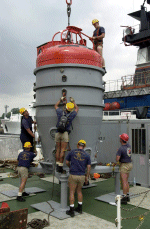 | 243k | Members of the U. S. Navy's Deep Submergence Unit Diving Systems Detachment secure the Submarine Rescue Chamber (SRC) aboard the MV Kendrick in preparation for Exercise Pacific Reach 2000. | USN photo # N-1523C-002 by Senior Chief Photographer's Mate Terry Cosgrove, courtesy of chinfo.navy.mil. | |
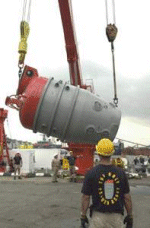 | 10k | Members of the U. S. Navy's Deep Submergence Unit Diving Systems Detachment secure the Submarine Rescue Chamber (SRC) aboard the MV Kendrick in preparation for Exercise Pacific Reach 2000. | USN photo # N-1523C-002 by Senior Chief Photographer's Mate Terry Cosgrove N-1523C-047, courtesy of chinfo.navy.mil. | |
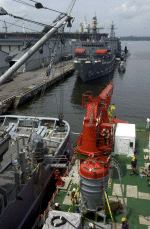 | 291k | The U.S. Navy's Submarine Rescue Chamber(SRC) (foreground) is secured to the deck of the MV Kendrick by members of the Deep Submergence Unit Diving Systems Detachment in preparation for a multinational submarine rescue training exercise called Pacific Reach 2000. | USN photo # N-1523C-009 by Senior Chief Photographer's Mate Terry Cosgrove, courtesy of chinfo.navy.mil. | |
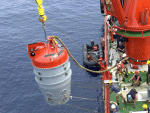 | 81k | The U.S. Navy's Submarine Rescue Chamber (SRC) deploys from MV Kendrick to dive to the Republic of Singapore submarine Conqueror . During the submarine rescue exercise Pacific Reach 2000, the SRC will dive to the ocean floor more than 200 feet below, dock on the "disabled" sub and practice evacuating sailors. In a real life rescue, the SRC could safely deliver 6 sailors per trip to the surface. | USN photo # N-1523C-047 by Senior Chief Photographer's Mate Terry Cosgrove, courtesy of chinfo.navy.mil. | |
 | 258k | The Navy's Deep Submergence Unit Submarine Rescue Chamber is loaded on board a 747 aircraft at the Air Mobility Command (AMC) terminal at San Diego, Calif, on 7 June 2005. The equipment is being transported to Italy, where U.S. and North Atlantic Treaty Organization (NATO) divers will respond to a submarine escape and rescue exercise in the Mediterranean Sea during exercise "Sorbet Royal 2005." "Sorbet Royal " will test the capabilities and interoperability of 10 participating nations. Four submarines will participate in the exercise, testing divers abilities use rescue equipment to solve complex disaster problems. | USN photo # N-6426C-030 by Photographer's Mate 1st Class James Christopher, courtesy of chinfo.navy.mil. | |
 | 227k | The Navy's Deep Submergence Unit Submarine Rescue Chamber is preparing to be loaded on board a 747 aircraft at the Air Mobility Command (AMC) terminal. | USN photo # N-6426C-011 by Photographer's Mate 1st Class James Christopher, courtesy of chinfo.navy.mil. | |
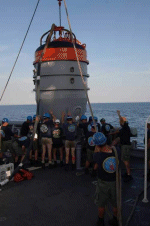 | 27k | Sailors aboard Grasp (ARS-51) ease the Submarine Rescue Chamber over the side on its way down to mate with the Spanish submarine Siroco. | USN photo courtesy of sorbetroyal2005.celex.net. | |
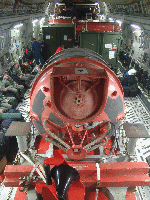 | 170k | Crewmembers aboard a U.S. Air force C-17 relax in the company of their charge, the U.S. Navy Submarine Rescue Chambers Flyaway System (SRCFS), during a training exercise, conducted at Naval Air station North Island at San Diego,12 February 2006. | USN photo # N-1126G-001 by Electronic's Technician Charles T. Grandin, courtesy of chinfo.navy.mil. | |
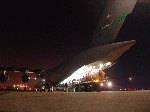 | 77k | U.S. Navy Submarine Rescue Chambers Flyaway System (SRCFS) is loaded on board an U.S. Air force C-17 during a training exercise, conducted at Naval Air station North Island at San Diego 12 February 2006. | USN photo # N-1126G-002 by Electronic's Technician Charles T. Grandin, courtesy of chinfo.navy.mil. | |
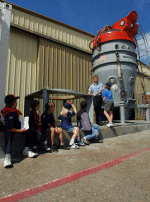 | 131k | Boatswain's Mate 3rd Class Jason Beres, a reservist assigned to Deep Submergence Unit (DSU) at Naval Air Station North Island, talks about the Submarine Rescue Chamber to Cub Scout Pack 546 on 5 May 2007. The SRC is used to rescue the crew from a submerged disabled submarine. DSU invited more than 1,000 visitors to tour its facility, May 4-5, during the Submarine Rescue Day that showcased the personnel, equipment, and capabilities used to perform worldwide submarine rescues. | USN photo # N-4163T-055 by Mass Communication Specialist 2nd Class Stephanie Tigner, courtesy of chinfo.navy.mil. | |
There is no DANFS History currently available for SRC at the Haze Gray & Underway Web Site, the main archive for the DANFS Online Project.
Crew Contact And Reunion Information
U.S. Navy Memorial Foundation
Fleet Reserve Association
Additional Resources and Web Sites of Interest
Surviving SUBSUNK
Naval Technology-LRS Sunmarine Rescue Systems-Submersible Rescue Vehicle
USS Squalus (SS-192) Salvage & FAQ
The NATO Submarine Rescue System goes to sea for initial trials
| Back To The Main Photo Index | Back To the Submarine Index |
|
Problems and site related matters, E-mail Webmaster |
|
This page is created and maintained by Michael Mohl All Pages © 1996 - 2025 NavSource History |